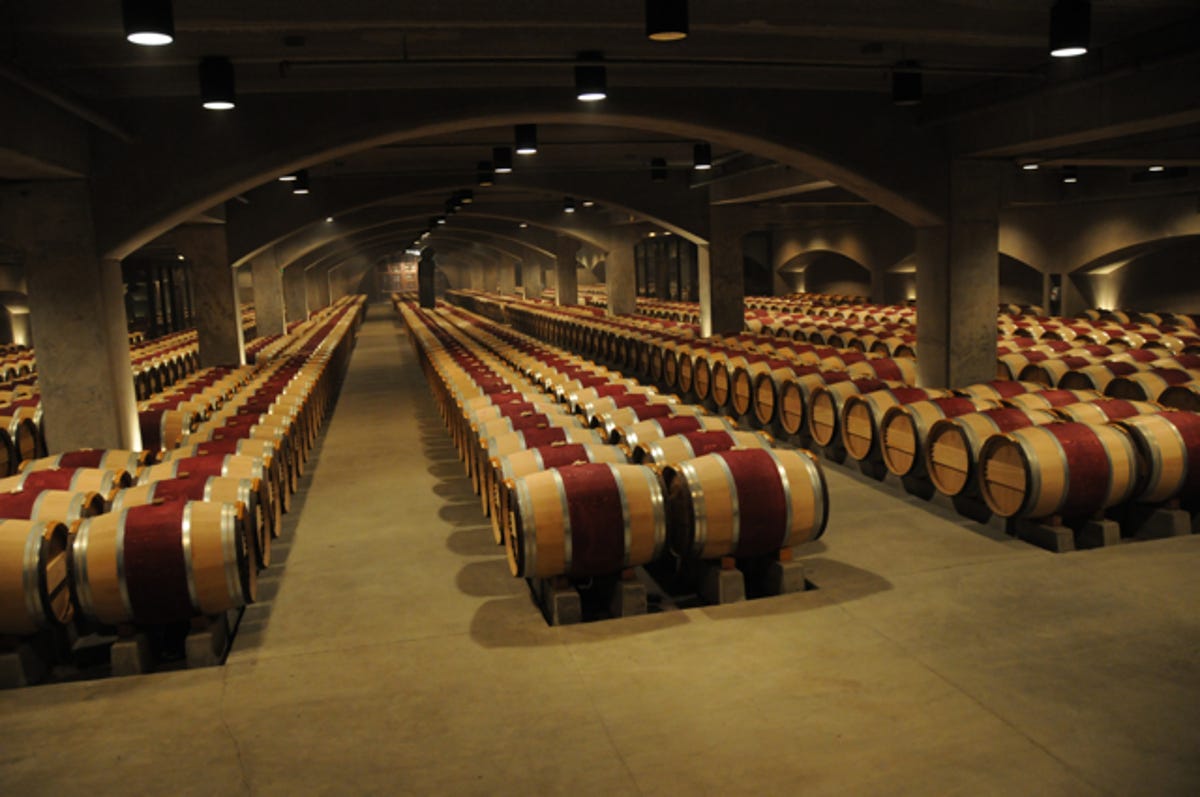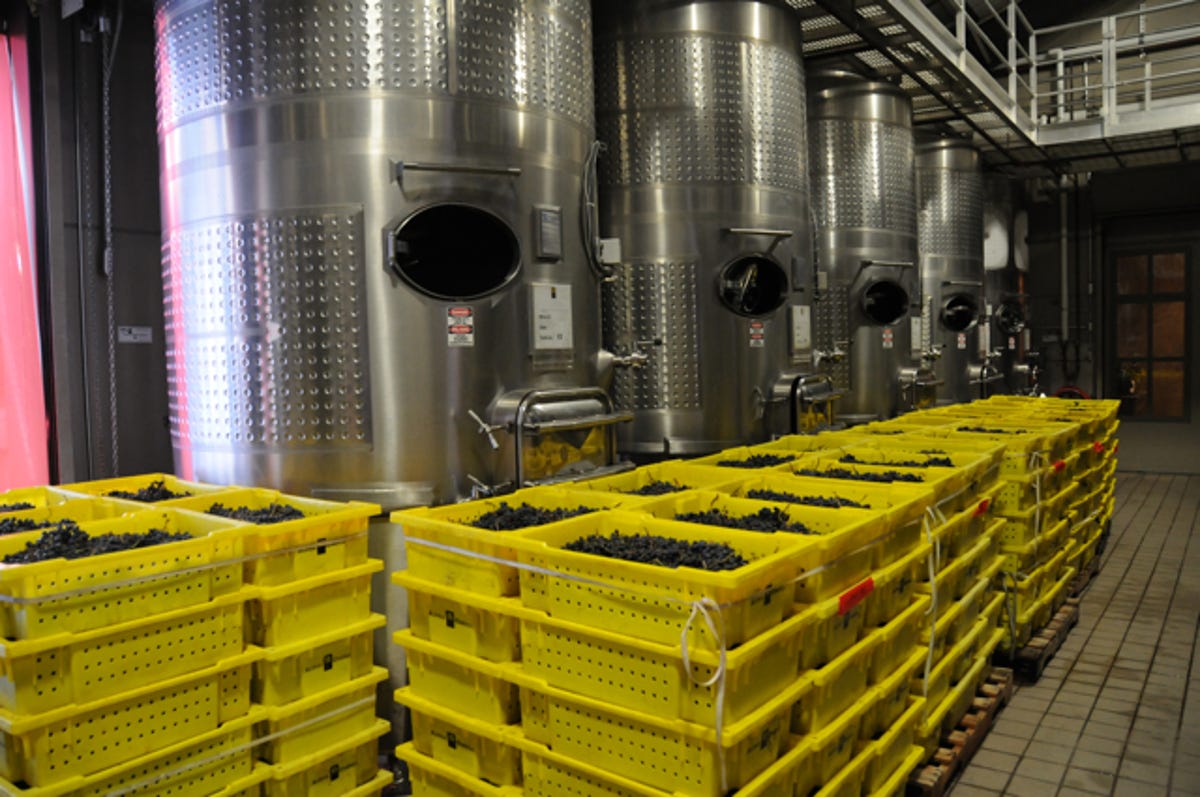The art of making high-end wine (photos)
Road Trip at Home: A look at the wine-making process at both a large winery and a boutique label at their annual harvests.

The first-year barrels
NAPA VALLEY, Calif.--Up here in wine country, as the days get shorter, it can only mean one thing: harvest. Sure enough, all across this beautiful, rich, and lush vineyard-covered region, wineries big and small are bringing in the grapes, and getting ready to bottle their 2010 vintages.
That's why CNET reporter Daniel Terdiman headed up to this sun-soaked area about an hour north of San Francisco--to see how harvest works at both a high-end major label (Robert Mondavi Winery), and a well-regarded boutique winery (Alpha Omega). And while their practices are quite similar, there are also some significant differences.
This is the first-year barrels room at the Robert Mondavi Winery's To Kalon Cellar, where thousands of cases' worth of $150-a-bottle Cabernet Sauvignon Reserve come after sitting for about 45 days in fermentation tanks. The wine will stay in these barrels for a year, after which the winemakers will taste each barrel and then make blending decisions that will determine which wine goes into the second-year barrels.
Each barrel in the first-year room is made from brand-new French oak and costs $1,600.
The grapes
Cutting the grapes
Harvest workers--hired by a vineyard management company--work quickly and efficiently, cutting the bunches of grapes with a single motion, and dumping them in yellow bins that are designed to keep the grapes from being crushed.
Crews worked most of the night during the two-day harvest of the Horton vineyard, sometimes working under floodlights, and other times under the lights of tractor headlights. Only the crew that began work at about 7 in the morning worked with natural light. The goal was to get all the grapes in before the day got hot, to ensure that the grapes themselves are brought in cool.
Down the rows
FYBs on the ground
Bin of grapes
Horton West-South
Mondavi entrance
Windmill
Weighing the grapes
Robert Mondavi vineyard
The big tanks
Sorting table
Grapes on the table
Up the conveyor belt
The stems
Tops of the tanks
Into the tanks
Second year barrels
Barrel with red
Alpha Omega naturally red


